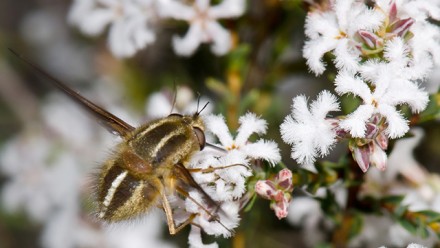E&E PhD Exit Seminar: Systematics of the Australian members of bee fly subfamily Bombyliinae and molecular phylogeny of the superfamily Asiloidea using anchored hybrid enrichment and transcriptome data
The Bombyliidae (bee flies), comprising 15 subfamilies, over 250 genera and over 5,000 described species, is one of the most species-rich families in lower Brachycera (Diptera). Bee fly larvae are almost exclusively parasitoids, feeding on the immatures of a wide range of insect hosts; and their adults feed on nectar and pollen and are important pollinators. Despite their species diversity and ecological significance, many questions remains unresolved, including their phylogenetic position, higher level classifications, and even the generic and specific level systematics.
My PhD performed phylogenetic analysis in different levels, using both phylogenomic data (combined anchored hybrid enrichment data and transcriptome) and morphological characters, including from some new species that I described. During this thesis, I resolved the evolutionary position of Bombyliidae, reconstructed the higher level relationships within the family, explored the generic relationships and biogeography of the subfamily Bombyliinae, and resolved the systematics of the Australian members of the subfamily Bombyliinae.









